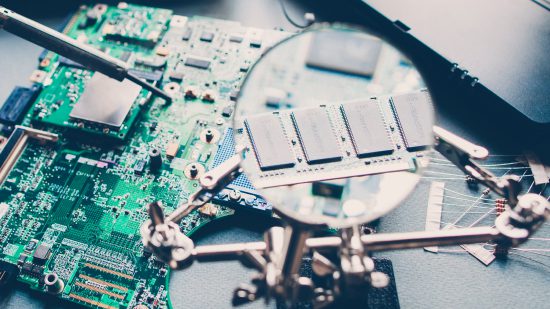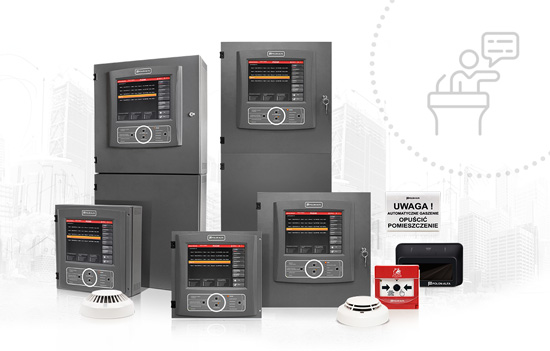Maintenance
Every fire alarm system should be properly maintained from the first day of commissioning (whether the facility is in use or not). Maintenance of the entire system is the responsibility of the User (owner) of the installation. Maintenance ensures that the installation is functioning as intended and consists of periodic inspections and technical support including repairs. It is required to regularly perform maintenance and keep records in the Maintenance Logbook to preserve the warranty of each device.
Note! POLON-ALFA S.A. does not install or maintain fire alarm systems.

General information
Proper maintenance of the installation can be ensured by the User’s own trained specialists. The User may also sign the appropriate contract with the Maintenance – Installation Company trained by POLON-ALFA S.A.
The User should appoint one person (or more people), also called Operator, who is on duty at the control panel and responds to signals. In terms of operation, this person should be trained by the Maintenance Attendant/Installer in accordance with Manual of Control Panel Signals Responding provided with the control panel. The Manual should be placed next to the control panel. In addition, a person authorized by the User should periodically conduct inspections of the installation beyond the simplest Operator’s activities specified in the attached table below (TABLE 1). In the absence of continuous duty, the fire alarm system should be connected to the monitoring system of the State Fire Service.
Maintenance Attendant, at the request of the User, should check all elements of the system (fire detectors, manual call points, automation elements) at least once a year.
The inspection can be divided into parts and so different groups of components can be checked on subsequent visits throughout the year as for a larger number of components, more responsible installations, or those that work under more harsh conditions.
The prerequisite to perform maintenance on SAP installations at least once a year is specified by the (Polish) Regulation of the Minister of Internal Affairs and Administration of June 7, 2010, on fire protection of buildings, other construction facilities, and areas (Journal of Laws, No. 109/2017, item 719).
If the environmental conditions in the protected facility are not optimal (humidity, dirt, dust, etc.), maintenance operations should be performed more frequently than it is required by the regulation given above.
The maintenance of fire alarm system should consist of reaching each monitoring point (element) separately, causing its triggering (e.g. smoke detectors- with an aerosol smoke detector tester), and checking the correct response in accordance with the technical engineering documentation (DTR) of POLON-ALFA S.A.
During inspections, the Maintenance Attendant should, in accordance with the technical and engineering documentation of the control panel, block the activation of fire automation elements and transmission of alarms that go out to monitoring.
The User of the installation should ensure (e.g. under the relevant installation maintenance contract) that in addition to periodic maintenance, a Maintenance Attendant is available at any time for the User of the fire alarm system installation. That is, when the control panel signals damage or, for example, when renovations are being done in rooms with installed detectors (to keep them covered).
During inspections, the Maintenance Attendant should, in accordance with the technical and engineering documentation of the control panel, block the activation of fire automation elements and transmission of alarms that go out to monitoring.
For each fire alarm system installations, records should be kept in the Maintenance Logbook (it can be purchased from the Manufacturer), in which it is necessary to record periodic inspections and their scope, as well as any occurring alarms and damages reported by the control panel, their causes and a record of actions taken to eliminate them. All records should be controlled by the User.
The User is obligated to show the maintenance logbook to the Manufacturer (POLON-ALFA S.A.) in the case of warranty repairs.
Criteria for determining the frequency of inspections of SAP installations.
The newer generation panels require less frequent maintenance due to the precise self-monitoring of their own internal and external circuits, along with the linear and executive elements integrated with them.
Sensitivity of different types of fire detectors (due to their work mode) can change during the operation, mainly as a result of the contamination of their measurement system. Special attention should be paid to the possible phenomenon of contamination of optical smoke Detectors’ chambers (labyrinth structures) resulting from a regular usage.
Smoke detectors that contain UV sensor are more sensitive to the contamination of optical system than detectors with IR sensor.
Detectors with so called characteristic compensation function (maintaing constant sensitivity) are less sensitive to contamination of measurement chambers than those ones without such systems.
Multi-threshold detectors (with a service threshold) self-report the need to purge the chambers, weeks before the sensitivity threshold limit is reached. Therefore, it is recommended to inspect installations with uncompensated detectors more than once a year.
Power supply continuity is guaranteed by reserve battery bank that is kept charged. The older the batteries, the more often they should be inspected, especially, at the end of their guaranteed Lifespan.
Open acid and alkaline batteries, which require electrolyte replenishment, should be inspected every six months. For sealed acid batteries (with gel electrolyte) with additional temperature-controlled electrolyte – once a year or according to the manufacturer’s recommendations.
The harsher conditions, the more frequently periodic inspections should be conducted. In special cases, with very high dust, corrosive environments and high humidity – inspections may be required every 3 months or more often.
Outdoor detectors and manual call points should be inspected at least once every 6 months. When the installation operates in clean and dry conditions with even temperature, inspections can be conducted once a year.
The frequency of maintenance depends on the age of the installation- the newer it is, the less frequently it must undergo periodic maintenance (when meeting the minimum requirements specified in the previous sections). In installations that operate for a longer period, e.g. about 10 years (and older), it is recommended to conduct inspections every six months.
When determining the time period for inspections, it is important to keep in mind that these are safety installations in which the parameters should be controlled more often. They have a direct impact on the safety of control panel operators (controlling the preservation of efficient zeroing and grounding), people residing in facilities (installations with a fire extinguisher automation), and facilities generally (installations with Ex circuit zones). Fire extinguisher automation, zeroing, and grounding should be controlled, at least every 6 months.
It should be noted that its functioning is affected by the use of the installation, environmental conditions of the devices, and human activities such as renovations, conversions of the facility. In addition, a high impact may also have vibrations caused by the operation of machinery, movement of means of transport, etc., as well as unintentional or intentional interference with the installation. All these factors are not without influence on its reliability.
Therefore, wherever they occur, it is recommended that they be inspected at least once every six months.
In short
According to the current regulations, a periodic inspection once a year is sufficient. However, in many cases, the factors listed in the section ‘Criteria determining the frequency of inspection of SAP installations’ must be taken into account.
Operators (owners) of premises should remember that they have a duty to keep the installation in good working order at all times. Repeated false alarms due to lack of maintenance, poor design – e.g. faulty detector selection, incorrect configuration of the fire alarm control panel or errors in installation workmanship must not be allowed.
Particular attention should be paid to so called false fire alarms signalled by the fire alarm panel. These can cause the Operator, who is required to observe and respond to panel alarms, to ignore them over time (and automatically delete them) and this in turn may result in a lack of appropriate response in the event of a real fire alarm.
Service
POLON-ALFA as a manufacturer of fire alarm systems and dosimetry equipment performs warranty and post-warranty payable repairs for the sold goods.
Contact

Shipping products for repair
The product should be packed in the original packaging to ensure safe transportation. The use of substitute packaging is permissible, but must provide adequate protection against damage during transport.
The appropriately packaged product, together with the repair order (for warranty repairs, see the text below), must be sent at your own expense to the following address: POLON-ALFA S.A. 85-861 Bydgoszcz, ul. Glinki 155 (The parcel should be marked ‘WYROBY DO NAPRAWY’.)
Request repair service
Request of repair service can be submitted via any form used by the Customer, provided that all the required information is included in it. You can also use the ready-made forms below.
- Company name
- Address
- VAT No.
- Contact information of the person (name, telephone, fax and e-mail)
- List of shipped products with serial numbers
- Description of actual damage or its cause.
- Type of repair (warranty/refundable repair)
- Shipping details (if different from company details)
Service Request Form
SSP Warranty
Note! POLON-ALFA company is particular about environmental protection in its operations. In this regard, to reduce paper consumption, we stopped printing and delivering paper warranty cards to our Customers. These cards are not currently required for the warranty service.
Warranty terms and conditions for fire alarm devices manufactured by POLON-ALFA S.A. are contained in the
GENERAL TERMS AND CONDITIONS OF CONTRACT (OWU)

Frequently asked questions
This line should be made with a cable of the appropriate PH class. The connection of power supply to the sirens should be carried out using appropriate installation boxes equipped with ceramic terminal blocks and appropriate protection.
The EKS-4001 control and monitoring element is equipped with an output continuity check circuit, by default it is hardware and software active. If the OUTPUT is not connected, the circuit is interrupted or the polarity is reversed, a fault will be reported. When control circuit monitoring is not required, disable the jumper inside the EKS-4001 module and disable the output continuity control for a given EKS-4001 element by software in Menu – Element Parameters. When control output continuity control is required, verify the polarity of the wires connected to the terminals in the EKS-4001 element or possible breaks in the connecting wires in the controlled device.
Unused control inputs of EKS-4001 and EWK-4001 elements should be closed with 20 kOhm resistors. These resistors are included with the device.
